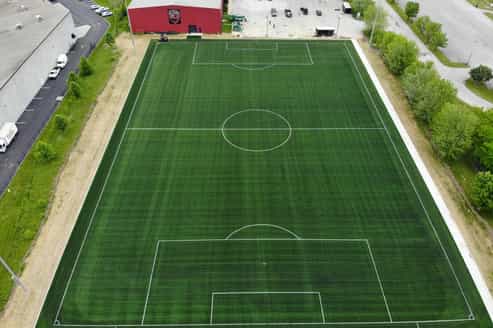Soccer Field maintenance: How to keep your field in top condition

FIFA estimates that 3 billion people play soccer in the world, making it the most popular sport in the world by far. This popularity means that you’ll probably want to invest in keeping your soccer field in top condition, which means keeping it well-maintained, clean, and safe. Here are some tips on how to do just that!
Start with The Basics
Assuming you have a soccer field, there are a few basic things you need to do to maintain it. First, you need to make sure the grass is cut short. This will help prevent injuries and make the field look more presentable. Second, you need to line the soccer field. This will ensure that the game is played fairly and that the ball does not go out of bounds. Third, you need to make sure there are no holes in the soccer field. If there are, players could trip and get injured. Fourth, you need to set up goals at each end of the soccer field. This way, players know where they are supposed to score. Fifth, you should mark off an area for spectators to stand during games.
Mowing is a Must
No matter the size of your soccer field, mowing is a must. Not only does it make the playing surface more even, but it also helps prevent injuries. The best time to mow is early in the morning before the sun gets too hot. This will help the grass stand up straighter and dry out more quickly. Be sure to use a sharp blade and change it frequently to avoid damaging the grass. To improve drainage, sprinkle water on the area immediately after mowing. Keep an eye on any clumps of grass or weeds that may be present and pull them as soon as you see them for easy removal. Use a weed killer for stubborn weeds that refuse to go away and remove fallen leaves with a leaf blower or rake during autumn months. Keep your blades sharpened and at least once every season have them professionally sharpened by experts. If there are any divots on the ground from stray balls or players, fill them with sand and flatten them out so they don’t become hazards for players again later in the season.
Fertilizing Your Grass
If you want a healthy, green soccer field, you need to fertilize your grass. Fertilizing your grass will give it the nutrients it needs to grow thick and strong. The best time to fertilize your grass is in the spring and fall. You should use a fertilizer that has a high nitrogen content. You should also oversee your soccer field every year. Overseeding will help ensure that your grass is thick and green. You should oversee your soccer field once or twice a year during the late winter or early spring months. A good way to make sure you get an even distribution of seed on your lawn is by using what’s called an oscillating seeder. These machines are available at most local garden centers and will save you a lot of time compared to hand seeding with a spreader or rake.
Weed Control and Insecticides
A well-maintained soccer field is a safe and enjoyable place for everyone. To maintain your soccer field, you need to control weeds and insects. You can do this by using herbicides and insecticides. Herbicides will kill weeds, while insecticides will kill insects. Make sure to read the labels on these products and follow the directions carefully. It’s important to note that not all of these products are biodegradable. If they are not biodegradable, it means that they cannot be broken down or used as food sources by microorganisms such as bacteria or fungi.
Water Management
Proper irrigation is essential to a healthy and vibrant soccer field. Depending on the climate, you may need to water your field daily or multiple times per week. Always check the weather forecast before watering to see if rain is in the forecast. too much water can damage the roots of your grass and lead to drainage problems. Drying out an area that has been over-watered can take up to two weeks for dry conditions; four weeks for wet conditions. Fertilizing: You should fertilize as recommended by the seed company before planting. After fertilizing, it is best to wait 7-10 days before irrigating again so the fertilizer has time to work its way into the root system. A light surface fertilizer application at 3-4 month intervals during summer months is recommended.
Seeding/Re-Seeding and Over-Seeding
Seeding a soccer field is vital to having a strong, healthy playing surface. There are three types of seedings: new seeding, re-seeding, and over-seeding. New seeding is starting from scratch with an empty field. Re-seeding is done when there are patches of dead grass that need to be replaced. Over-seeding is adding more seed to an already existing lawn. The most important thing to remember when seeding a soccer field is to use the correct type of seed for your climate and soil conditions.
Other Items To Consider
Soccer fields, like any other sports facility, need regular maintenance to stay in good condition. Here are a few tips on how to keep your soccer field in top shape:
-Regularly check for any damage to the field and make repairs as needed.
-Mow the grass regularly and at the proper height.
-Fertilize and water the grass regularly.
-Remove any debris from the field.
-Check for goal posts that are loose or need repair.
-Paint lines on the field as needed.
By following these tips, you can be sure that your soccer field will be safe and playable for years to come.






